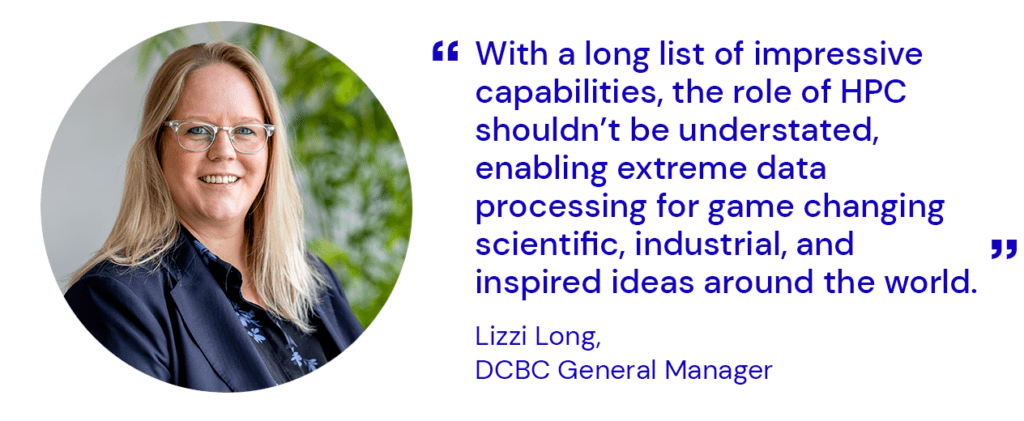Need for speed: How data centres are keeping pace
The traditional data centre is reaching its limit; however, it’s not the first, or the last time it must adapt to meet the ever-changing needs of digital innovation.
Adoption, migration, optimisation, security and management services designed to deliver business agility.
Improve your security posture with tailored strategies and front-line defence services.
Scalable colocation and connectivity within a hyper secure environment.
Disaster recovery and serviced offices in secure, premium office facilities.
Tailored end-to-end solutions for your hardware ecosystem across the widest range of vendors.
Seamless management of your IT environment, underpinned by world-class cyber security, no matter where you are on your journey.
Securely and effectively operate, monitor and maintain your network.
Enjoy the comfort of a modern working space supported by world class technology, security and resilience.
Help your clients take control of their IT environment with Australia and New Zealand’s leading hardware maintenance provider.
Interactive Anywhere provides robust infrastructure solutions designed to support the seamless operation of digital environments. These solutions include scalable cloud services, reliable data storage, and efficient server management, ensuring optimal performance and uptime.
The network solutions from Interactive Anywhere encompass comprehensive design, implementation, and maintenance of secure and efficient networks. By optimising connectivity and bandwidth, these solutions facilitate seamless communication and data transfer, enhancing overall productivity and operational efficiency.
Interactive Anywhere offers dedicated end user support services that ensure users receive prompt assistance with technical issues. This includes help desk support, troubleshooting, and training, aimed at improving user experience and minimising downtime for businesses.
With a focus on safeguarding digital assets, Interactive Anywhere's cyber security solutions provide advanced protection against cyber threats. These solutions include threat detection, risk management, and compliance services, ensuring businesses can operate securely and with confidence.
Interactive offers financial institutions with secure operations, robust cyber security, seamless connectivity, end-user support, and cloud solutions, ensuring long-term resilience.
For manufacturing, precision and efficiency are paramount. Our solutions optimise operations, streamline processes, and ensure seamless connectivity to drive productivity and innovation.
In professional services, reliability and agility are crucial. Our solutions enhance efficiency, streamline workflows, and provide seamless connectivity, empowering firms to deliver exceptional client experiences and stay ahead in a dynamic market.
In aged care, precision and patient well-being are fundamental. Our solutions enhance operational efficiency, streamline workflows, and guarantee secure, seamless connectivity, empowering providers to deliver exceptional care and lead in an ever-evolving sector.
We're Australia's leading IT service provider and we keep technology human.
News & insights from our experts to help you drive performance and grow your business.

The amount of data created, captured and stored over the past 10 years has grown exponentially, with predictions for global growth said to reach 180 zettabytes by 2025. Data centres play a key role in storing this data, however the pressure is mounting – the way they are created and designed today must drastically evolve.
According to AFCOM’s 2021 State of the Data Centre Report, trends indicate data centre design will have a broader focus on performance, density, and efficiency, with 62 percent of respondents reporting an increase in rack density over the past three years (25 percent have an average rack density of seven to 10kW).
The traditional data centre rack that holds just 7kW is reaching its limits; however, it’s not the first, or the last time data centres have needed to adapt to meet the ever-changing needs of technology advancements. Data will always need a home. So, meeting the rapid demand of rising density and the uptake of high performance computing (HPC) is no different – data centres will always keep pace.
Once considered a niche, HPC is transitioning into mainstream businesses, with more scalable, cost-efficient solutions bringing it within the scope of new users. Whether it’s performing high-frequency trading, rendering special effects for movies, or undertaking big data calculations a growing number of organisations rely on HPC for daily operations.
While a laptop or desktop with a 3.0 GHz processor can perform around three billion calculations per second, a HPC solution performs quadrillions. With a long list of impressive capabilities, the role of HPC shouldn’t be understated, enabling extreme data processing for game changing scientific, industrial, and inspired ideas around the world.

Processing huge amounts of data at speed, HPC uses large quantities of power per cabinet, generating a vast amount of heat. The heat load of high-density equipment must be managed differently to low-density equipment. Traditional data centres with perimeter cooling are not equipped to provide next generation cooling capabilities to accommodate high power density – no matter its configuration, air cooling simply cannot deliver the heat removal capacity that is required for this level of efficiency.
A reconfiguration of traditional data centre infrastructure, the high-density data centre (HDDC) has been quietly evolving in the shadows of rapid technological innovation.
According to Gartner, Inc. “The use of liquid cooling can solve the high-density, server-cooling problem, because water (conductive cooling) conducts more than 3,000 times as much heat as air and requires less energy to do so. Liquid cooling enables the ongoing scalability of computing infrastructure to meet business needs.” There’s also an added benefit here – unlike traditional air-cooled data centres, as more workloads move across to high-density racks, the total kW of cooling load will actually decrease. This is because the majority of airflow is handled close coupled to the HDDC rack, which reduces the amount of airflow needed to circulate across the entire data centre.
By 2025, Gartner, Inc. predicts that data centres deploying specialty cooling and density techniques will see a 20 to 40 percent reduction in operating costs. This prediction can sound confusing when data density is increasing at such high speed. According to Data Frontier’s 2021 Special Report, high-density racks have the ability to increase power density from 5-10kW per rack to 25-100kW per rack, offering the opportunity to substantially reduce the size of the facility.
That means future HDDCs will require less rack space, use less power distribution equipment, cost significantly less to build, and lower their overall consumption of materials.
Traditional data centre providers will continue to be met with the challenge of efficiently dissipating heat produced by HPC – ultimately accelerating their transition to HDDC, leading to more optimised, sustainable operations across the industry.
Once upon a time, to meet new demands, a data centre would simply increase floor space and install more racks to hold more servers. While the problem of increasing density remains unchanged, the solution has become much more complex, with much more to consider than available floor space. That said, data centre solutions have evolved to be closely aligned with IT solutions – and when consolidated, these solutions will optimise commercial outcomes. While the world continues to embark on a data binge and the pace of change intensifies, the data centre will keep reinventing itself, opening new doors in the continual pursuit of digital innovation.
If speed is key for your business and milliseconds count, it could be time to investigate if moving to a high-density data centre